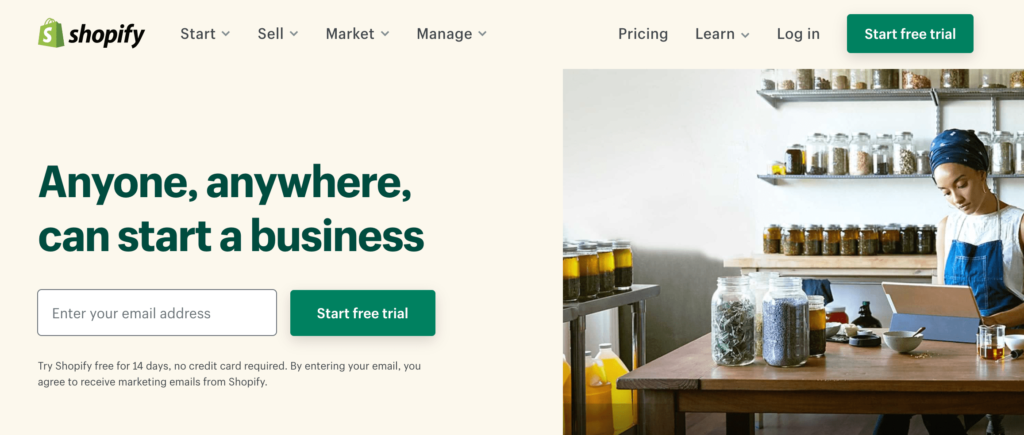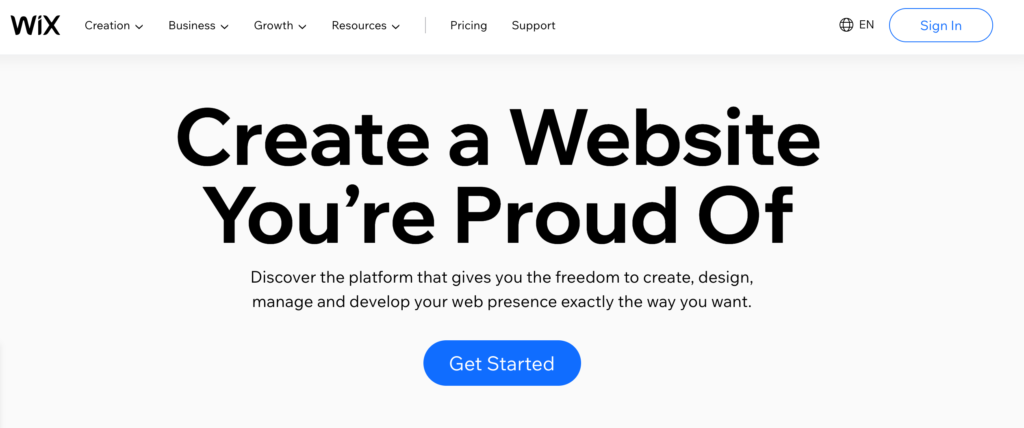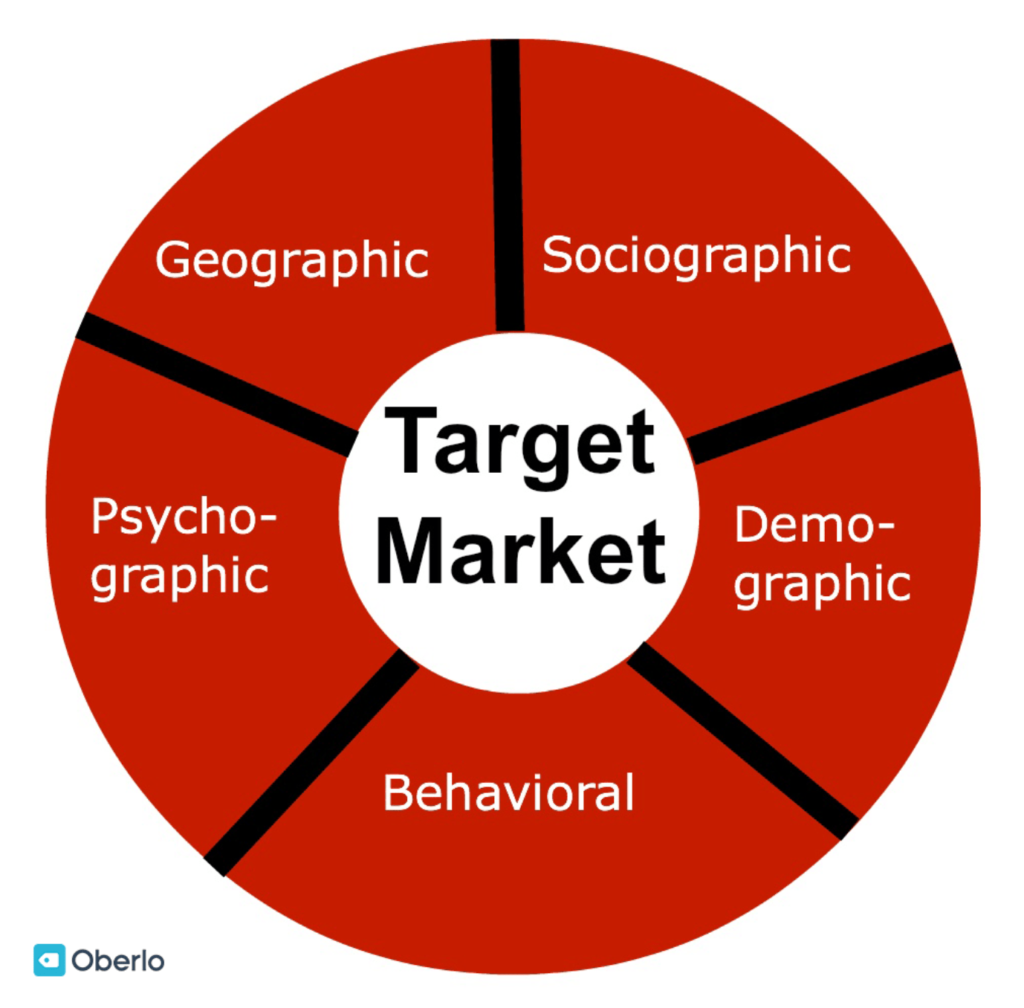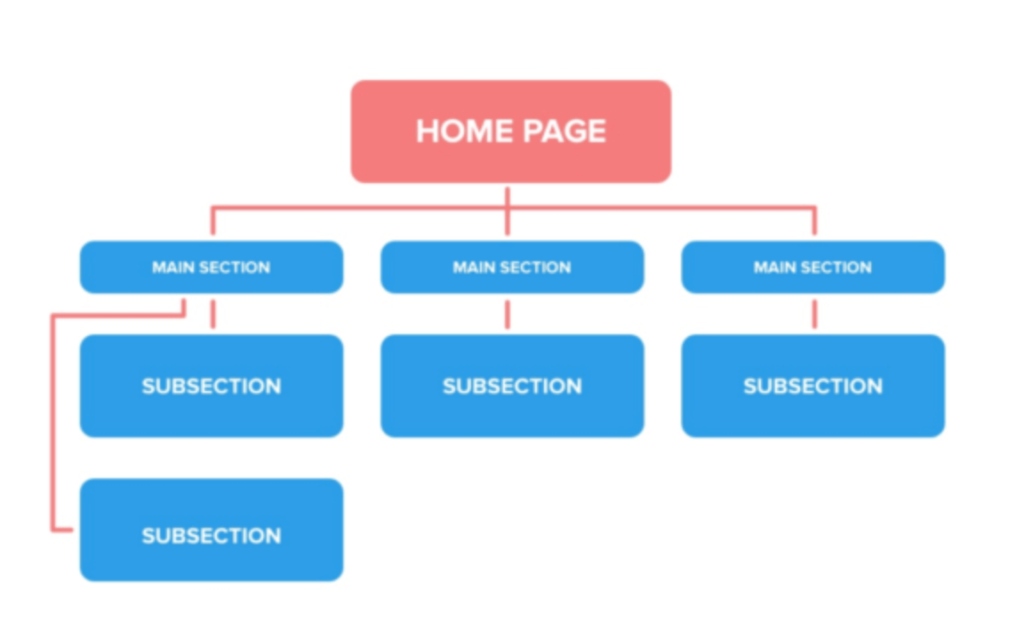We’re living in an era where anyone can start a website and use it to generate income. Whether it’s a small side hustle or a full-time job, the potential profits from starting a website are virtually limitless.
For so many people, the idea of making money from a website sounds like a dream. They love the concept but just don’t have any direction for getting started.
If you’re ready to turn that dream into a reality, you’ve come to the right place. Throughout my career, I’ve turned countless websites into money-making machines. I created this guide to share my knowledge and teach you how to do the same thing.
Top Website Builders to Make Money from a Website
If you want to make money from a website, you’ll need a website builder. Here’s the best options.
- Wix – Best website builder for your first website
- Bluehost WordPress Website Builder – Best for building sites that grow with your business
- Squarespace – Best website builder for creators of all stripes
- Weebly – Best for making money with an ecommerce store
- GoDaddy – Best for building your website from your phone
You can read our full reviews of each website builder here.
5 Steps to Make Money From a Website
Making money from a website might sound complicated, but the entire process can be summarized in just five simple steps. I’ll break this process down into greater detail below.
- Choose Your Monetization Strategy
- Get Hosting, Register a Domain, and Create Your Site
- Identify Your Target Market
- Create Content and Build Out Your Pages
- Drive Traffic and Scale Your Site
What to Expect When Making Money From a Website
Here’s a closer look at the easy parts and challenging aspects of making money from a website:
The Good
The best part about making money from a website is that anyone can do it. There are dozens of potential monetization strategies and minimal overhead to get started.
Compared to other business types, the startup costs for running a website are next to nothing. Will you need to make an upfront and ongoing investment? Absolutely. But you don’t necessarily need to purchase equipment, office space, inventory, hire employees, or pay for other costly expenses. There are plenty of ways to make money from a website from your own house with only a computer.
Another great part about making money with a website is that there are so many tools at your disposal. You don’t need to be a web developer or technology expert to get started. By leveraging resources like website builders, you can have a site up and running within minutes.
You don’t have to sell physical products online to make money with a website. There are many other ways to run a highly profitable website without worrying about buying inventory, storage, shipping, and maintaining relationships with customers. We’ll dive deeper into these website monetization strategies shortly.
Arguably the best part about making money from a website is the freedom. You can do it part-time in addition to your regular job, or turn it into a career.
There’s no cap on the amount of money you can make from a website. You can make money while you sleep and potentially use your website to pay for living expenses and support a family.
The Bad
Determining how you want to make money with a website is easy. But actually having success with that strategy is a different story altogether.
Websites don’t make money on their own. It requires a LOT of hard work, especially at the beginning. Driving traffic to your website takes time. Generally speaking, the more traffic you get, the more money you can make. But it takes months and sometimes years to get enough sustainable traffic to profit from your website.
Lots of people get discouraged if they don’t start making money on day one. But you need to treat your website like any other startup. It takes some time to break even.
While the costs to get started are fairly low, you’ll still have ongoing monthly expenses. You need to pay for web hosting, your domain, site security, and maybe even a subscription for your website builder.
Don’t quit your day job just yet. In the early stages, be prepared to work for little to no pay. Coming home from a full day’s work and then putting a few hours into another project isn’t easy, and it’s not for everyone.
But if you have an entrepreneurial spirit and you’re willing to put in the work, the benefits of starting a website can be extremely fruitful.
Step 1 – Choose Your Monetization Strategy
The first thing you need to do is figure out how you want to make money online. For some of you, this will be an easier task than others.
Let’s say you already have a retail business with an existing storefront. But now, you want to start expanding your reach outside of your local area. It’s relatively clear what your monetization strategy is going to be. You’ll be selling goods online from an ecommerce shop.
But not everyone falls into this category. Many of you reading this right now are up for anything and need some guidance. I’ll explain some monetization strategies below, starting with the most obvious example.
Ecommerce Store
As previously mentioned, selling products online through an ecommerce shop is one of the most straightforward ways to make money online. This is a very viable option for existing business owners who want to expand and for startups that want to sell online without a physical storefront.
If you’d like to start an ecommerce store, Shopify will be the best way to build your business.

Shopify is an all-in-one ecommerce platform. It’s a website builder, integrated payment processor, and shopping cart solution bundled into a single solution.
There are pros and cons to starting an online store. Your overhead will be a bit higher. You’ll have to manage inventory, shipping, customer relationships, returns, and things of that nature. But successful ecommerce shops can make a lot of money.
Sell Digital Products or Services
Rather than selling a physical product on the web, you can use a website to facilitate the sale of digital goods and services. This is an excellent option for anyone who is an expert in a particular field.
You can create ebooks, online courses, conduct webinars, and offer online consulting services to share your knowledge.
The overhead for this monetization strategy is much lower than running a traditional ecommerce shop. But you’ll still need to put in a lot of work to prepare your digital materials. But once that’s taken care of, you can start charging for downloads or services.
You can monetize ongoing services, one-off downloads, or both.
For example, let’s say you’re a chef looking to gain recurring monthly revenue with a subscription business model. You can charge a monthly fee to members and subscribers for weekly dinner recipes or something along those lines. Alternatively, you could write an ebook with recipes and just charge for single downloads. The possibilities are endless here.
Affiliate Marketing
Affiliate programs are growing in popularity. It’s a great way for anyone to make money online without worrying about selling anything.
For this model, you can write reviews about products or services and earn a commission from the businesses you’re writing about. You just need to join different affiliate programs and include an affiliate link when mentioning a product or service.
Let’s say you want to start a travel blog. Booking websites, hotels, travel credit cards, car rentals, and other businesses in this category have affiliate programs. If an affiliate link on your site leads to a transaction, you can earn a small commission on each one.
Ad Space
Another popular way to make money online is by selling advertising space on your site. You just need to join an advertising network, and they’ll handle the lion’s share of the workload.
Google AdSense is arguably the best option. There are millions of different advertisers using this network. You’ll have full control over where the ads appear on your site, and you can even choose which types of ads will be displayed. By selling advertising space on your site, you can earn money from clicks, views, actions, and conversions generated from the ads.
This is a lucrative model for high-traffic websites.
Step 2 – Get Hosting, Register a Domain, and Create Your Site
Every website needs a domain name web hosting service. You’ll also need to have a CMS (content management system) to publish your site live on the web.
This might sound overwhelming if you’ve never done these things before, but it’s really not that difficult. There are plenty of online resources that you can use to simplify this process and get all three of these in a single step.
If you’re looking for a fast and easy way to complete this step, go with Wix.

Wix is one of the best website builders on the market today. Anyone can use this platform to create a site from scratch without writing a single line of code—no development or design skills required.
I love Wix because it’s just so easy to use. It has a drag-and-drop interface so you can fully customize the look and feel of your site. There are hundreds of industry-specific templates to get you started. Wix even supports online transactions, so you can use it to sell products, digital goods, or services online.
Wix is also extremely secure. Their team of security experts is on the clock 24/7 monitoring and optimizing the Wix infrastructure to detect and prevent vulnerabilities and thwart cyber attacks in their tracks.
Wix also boasts an impressive 99.98 percent uptime rate and auto-scaling functionality. This means your website won’t go down even if your site goes viral and traffic surges.
Another reason why Wix is so highly recommended is that it’s an all-in-one website solution. It has built-in web hosting, and you can register your domain with Wix as well. And new customers can get a free domain name for one year.
Here are some alternative options to consider for this step:
Web Hosting
If you’re not going with an all-in-one website builder, then you need to get your site hosted directly from a web hosting provider. Bluehost is a great option to consider, especially for new sites. The service is affordable and built to scale as your site grows.
Another reason why I like Bluehost so much is that you can get a free domain for one year when you sign up for a new web hosting plan. So you can still kill two birds with one stone.
Domain Registration
Lots of platforms sell domain names. But generally speaking, it’s usually a better idea to get your domain name directly from a domain registrar. This is usually cheaper than going through a third-party platform, and it’s easier to manage your domain if you transfer your site.
Domain.com and Namecheap are two popular and reputable domain registrars to consider.
Site Builders and CMS Platforms
Your monetization strategy will play a role in how you manage your website and its content.
For example, if you’re running an ecommerce site, Shopify is the best standalone option, and WooCommerce is great if you’re using WordPress. For those of you who are planning to run a content-heavy website, like a blog for affiliate marketing or selling ad space, WordPress is your best bet. For everything else, stick with Wix. As an all-in-one website builder, Wix is perfect for beginners, and it has built-in monetization features.
Step 3 – Identify Your Target Market
Now that your website is set up, it’s time to choose your niche. Trying to target “everybody” is a losing strategy. It’s impossible to tailor your content to everyone, so don’t even try.
Instead, pick a target market using specific factors.

This step is crucial, as it will impact how you set up your website. Everything from design choices to content strategy will be related to your target audience.
For example, if you’re running an affiliate marketing website for high-end home appliances, you’d want to be targeting homeowners with a certain income level. If you’re running an ecommerce store that sells clothes to teenage girls, you’d likely choose a softer color palette with pink and light tones.
A blog appealing to new mothers will look very different from a blog post written for business owners. You shouldn’t be mixing this type of content on your website. So pick a niche, and stick to it.
This will also help you establish a brand image and unique brand voice, which you’ll need to have in the next step.
Step 4 – Create Content and Build Out Your Pages
Now that you have a firm grasp on who to target, it’s time to design your website around that audience. Start creating content and adding different pages.
Take your time, it doesn’t happen overnight. Content creation will be an ongoing task for your website’s lifetime (if you want to be successful).
Don’t try to be perfect here on day one. Your first blog post won’t be amazing. Your first landing page won’t be optimized for high conversions out of the gate. But you’ll be able to make adjustments and improvements over time.
The most important thing to consider here is that your site’s content follows a logical hierarchy, like this:

First of all, this is great for SEO, which we’ll discuss in greater detail shortly. But it also improves the user experience on your site, making it easier to monetize your content. It doesn’t matter if you’re selling physical products, digital services, or running an affiliate blog; every site needs to produce high-quality content that’s published with site structure in mind.
To get you started, here are some examples of content you can begin producing:
- Blog posts
- About page
- Landing pages
- Ebooks
- Videos
- Infographics
- Social media content
- Product pages
- Custom images
- Product descriptions
The type of website you have will impact the type of content you create. For example, an affiliate blogger won’t need to worry about product descriptions or product images. But even ecommerce sites should be publishing blogs regularly.
Step 5 – Drive Traffic and Scale Your Site
Once your site is up and running, you need visitors to make money. This statement holds true no matter what monetization strategy you’ve selected.
The more traffic you can get, the more money you can make.
Generally speaking, there are two ways to drive traffic to your site—paid traffic and organic traffic.
Full disclosure, getting traffic to your site is the most challenging part of making money online.
You don’t necessarily need to choose one method over another. In fact, a good mix of paid and organic traffic is the best way to boost your traffic. But not everyone has that luxury. I’ll explain both in a bit more detail below.
Paid Traffic
Paid traffic is the best way to get quick results. When you’re starting a new website from scratch and have zero visitors, getting people to find you organically is really tough. So you can use search ads, social media ads, or advertisements on other websites to increase your exposure and get some initial visitors to your website.
The cool thing about paid traffic is that you can usually target a specific audience through your advertising network. This ensures that your ads only appeal to people who are interested in your site’s content.
Paid traffic delivers quick and short-term results. The downside of paid traffic is that it’s an added expense. Plus, once you pull the plug on those ads, your traffic will likely drop.
Organic Traffic
Organic traffic is a much better long-term strategy. You won’t see results overnight, but it’s the best way to steadily increase your traffic and search rankings over months and years.
Getting organic traffic is also really affordable. Aside from your own time, there isn’t much of an up-front investment at all. It’s just a matter of understanding SEO best practices and creating content that appeals to the right audience.
Organic traffic is compounding in the sense that the more organic traffic you get, the higher you’ll appear in search results, ultimately driving even more traffic to your site. So once you get the hang of this strategy, the scalability is exponential.
Driving traffic to your website takes a lot of patience. So don’t get frustrated if you’re not seeing results right away. Just stick to your plan, and you’ll be able to make plenty of money from your website.
from Quick Sprout https://ift.tt/RIPocz9
via IFTTT
No comments:
Post a Comment